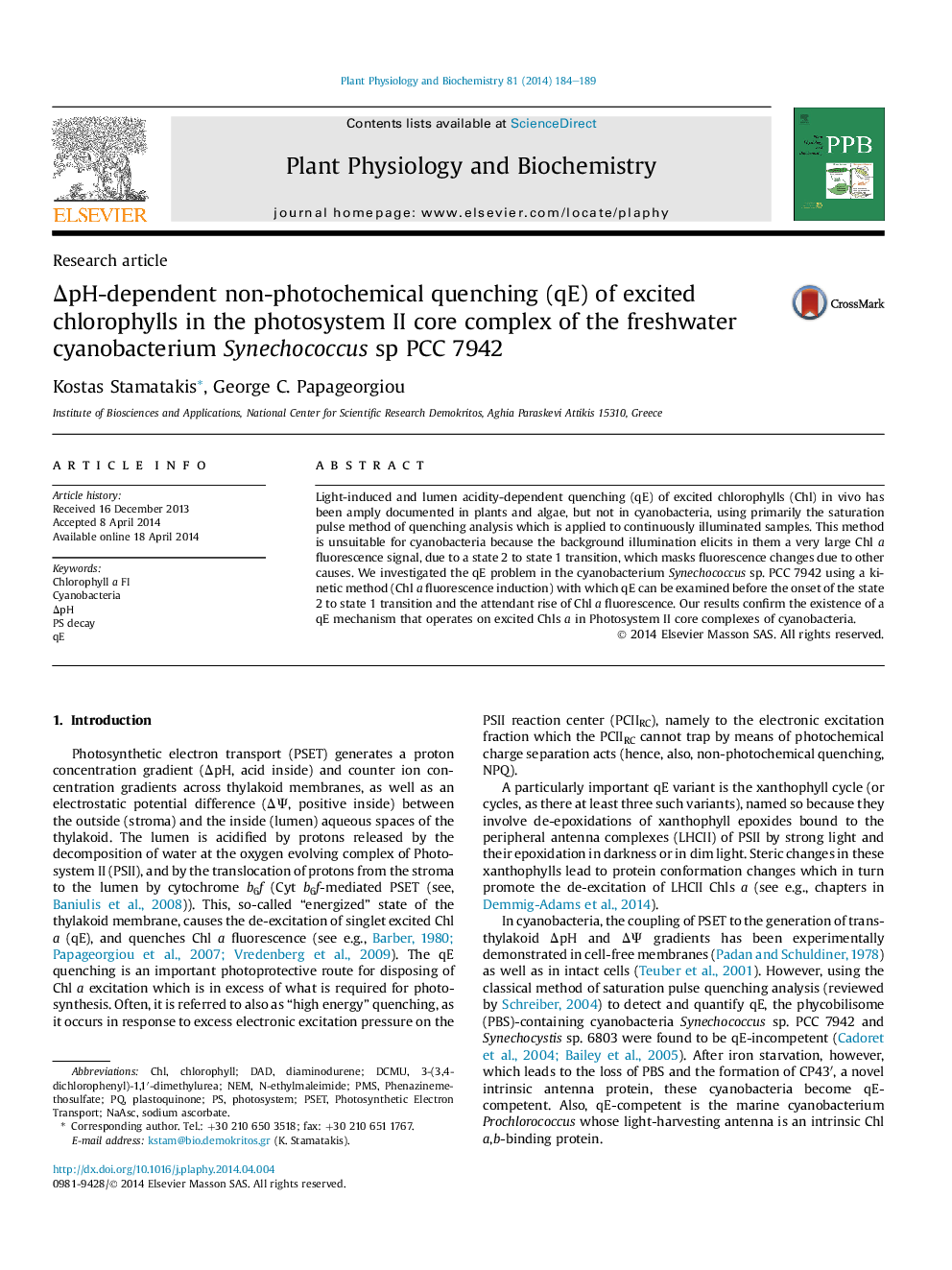| Article ID | Journal | Published Year | Pages | File Type |
|---|---|---|---|---|
| 2015862 | Plant Physiology and Biochemistry | 2014 | 6 Pages |
•Chlorophyll a fluorescence induction in cyanobacteria.•Photosystem II core complex of cyanobacteria.•Non-photochemical quenching of singlet chlorophyll a excitation.•Nigericin sensitivity ΔpH dependent quenching of chlorophyll a fluorescence.
Light-induced and lumen acidity-dependent quenching (qE) of excited chlorophylls (Chl) in vivo has been amply documented in plants and algae, but not in cyanobacteria, using primarily the saturation pulse method of quenching analysis which is applied to continuously illuminated samples. This method is unsuitable for cyanobacteria because the background illumination elicits in them a very large Chl a fluorescence signal, due to a state 2 to state 1 transition, which masks fluorescence changes due to other causes. We investigated the qE problem in the cyanobacterium Synechococcus sp. PCC 7942 using a kinetic method (Chl a fluorescence induction) with which qE can be examined before the onset of the state 2 to state 1 transition and the attendant rise of Chl a fluorescence. Our results confirm the existence of a qE mechanism that operates on excited Chls a in Photosystem II core complexes of cyanobacteria.
